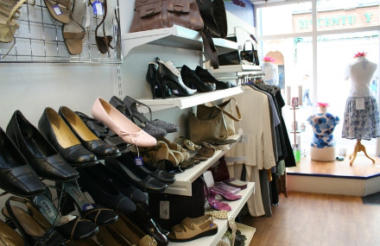On Saturday, the Times published an article with the heading “Taxpayer’s charity shop subsidy blamed for high street decline”.
The article says the amount councils have given to charity premises through a mandatory 80 per cent discount on business rates has more than doubled to £1.9bn over the past decade and made it difficult for private retailers to compete.
It says the rate relief has led to a rapid rise in charity shops over the past decade which has “crowded out” independent shops, cafés and leisure premises.
The article also says charities benefit from a local authority charge on premises that are left empty for longer than three months. This scheme, it says, has led some landlords with empty premises to split the cost of discounted business rates with charities if they agree to temporarily use the space.
As a solution, the article suggested councils voluntarily introduce a similar discount on business rates for independent retailers.
Big subsidies
Let’s start with numbers. The Times article says charities received £850m in business rates relief in 2008/09, growing to £1.9bn in 2017/18.
One of these figures is wrong and the other is misleading. According to the Ministry of Housing, Communities & Local Government figures, published in November, charities actually received £1.8bn in mandatory business rates relief in 2017/18. And the £850m for 2008/09 is not adjusted for inflation. £1.1bn for 2008/09 is the comparable figure.
Nevertheless, there has definitely been a big growth in the number of charity shops and therefore the amount the sector has received in business rates relief. It has been no secret that there are many more charity shops now than 10 years ago, so the related rise in business rates relief is not surprising.
However, as the past two Charity Shops Surveys have shown, charities are no longer expanding their shop chains as the same rate they were, if at all, so it is possible we have reached saturation point.
Scrap rate relief?
Thankfully, the article does not directly suggest removing rate relief for charity shops, which the Charity Retail Association believes would make at least half of shops uneconomical.
By putting the £1.9bn figure in the headline though, it goads the reader into questioning whether their hard-earned cash should be used to support charity shops.
It absolutely should. There are a number of benefits to there being more charity shops on and off the high street, but let’s start with their primary function – to provide a source of additional income for good causes.
About half of the charities that respond to the survey are hospices, the majority of which are local organisations. I’m sure most members of the public would be happy that their taxes are going to support palliative care, a service which is coming under increasing demand with an ageing population.
A Charity Retail Association report in 2017 listed additional benefits that charity shops provide, such as creating volunteering opportunities and providing a unique way for donors to recycle old clothes, the latter of which it suggested could even save councils money by preventing them from having to pay landfill tax.
Allies not adversaries
The main thrust of the article is a familiar line that charity shops and the subsidies they receive have led to tougher conditions for private retailers.
Private retailers have certainly endured a tough decade but to lay the blame for this at the door of charities is absurd.
A perfect storm of the 2008 financial crisis and a massive growth in online retailers such as Amazon is what has led to many shops closing in recent years.
Rather than pushing private retailers out, charities have kept high streets alive in a very difficult climate.
While some independent traders might be frustrated that voluntary organisations are offered a rate relief they are not, most value the role charity shops play in maintaining a high footfall on the high street.
Another key point is that charity shops are not direct competitors to private retailers. Unlike their independent neighbours, a majority of what charities sell is used goods. While some are beginning to sell some new products, these are often donated or facilitated by private retailers themselves.
In an age of increased scrutiny over all organisations’ ethical credentials, charity shops offer a perfect partnership for private retailers. It’s a win-win situation.
Solutions
The article does not mention that the government has already tried to reinvigorate the high street by lowering business rates for 90 per cent of all retail premises by a third from April this year.
To be fair, the article’s suggested solution of councils offering a similar discount in business rates to independent retailers might help them to get established. However, councils are unlikely to offer this on a voluntary basis as they continue to suffer cuts in central government funding.
Recently, Sports Direct owner Mike Ashley suggested at a select committee hearing that a new 20 per cent tax should be introduced for online retailers to help high street shops compete. It is an interesting suggestion although it might be worth the government stopping online retailers avoiding the tax they are already required to pay first.
Unfortunately, the elephant in the room is that Brexit could lead to another recession and an even tougher environment for retailers.
Described by Napoleon as a nation of shopkeepers, Britain should fight to preserve independent retailers as an integral part of its DNA. But whatever the solution is to reinvigorating them, the answer is not to attack their charity neighbours.
|
Related articles











